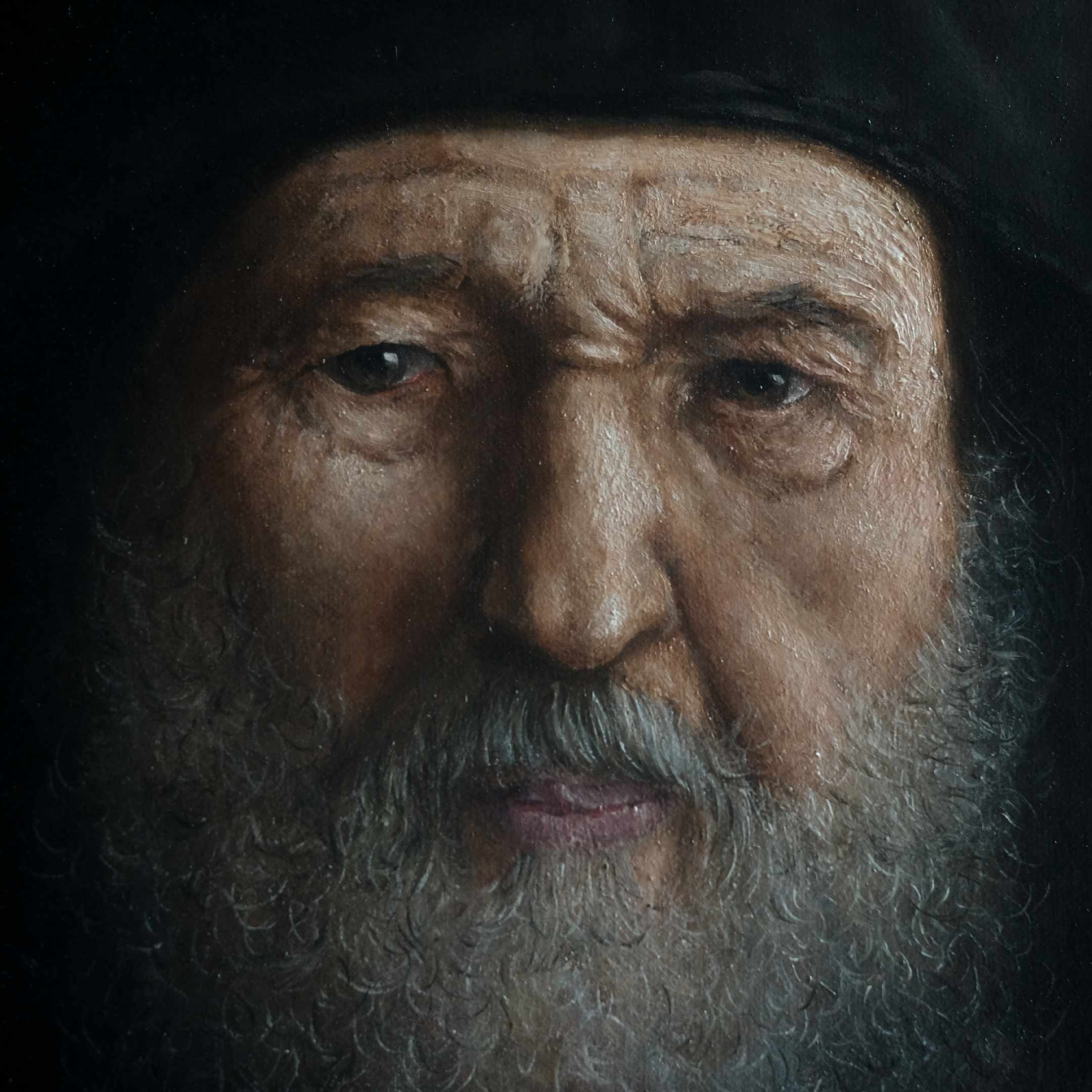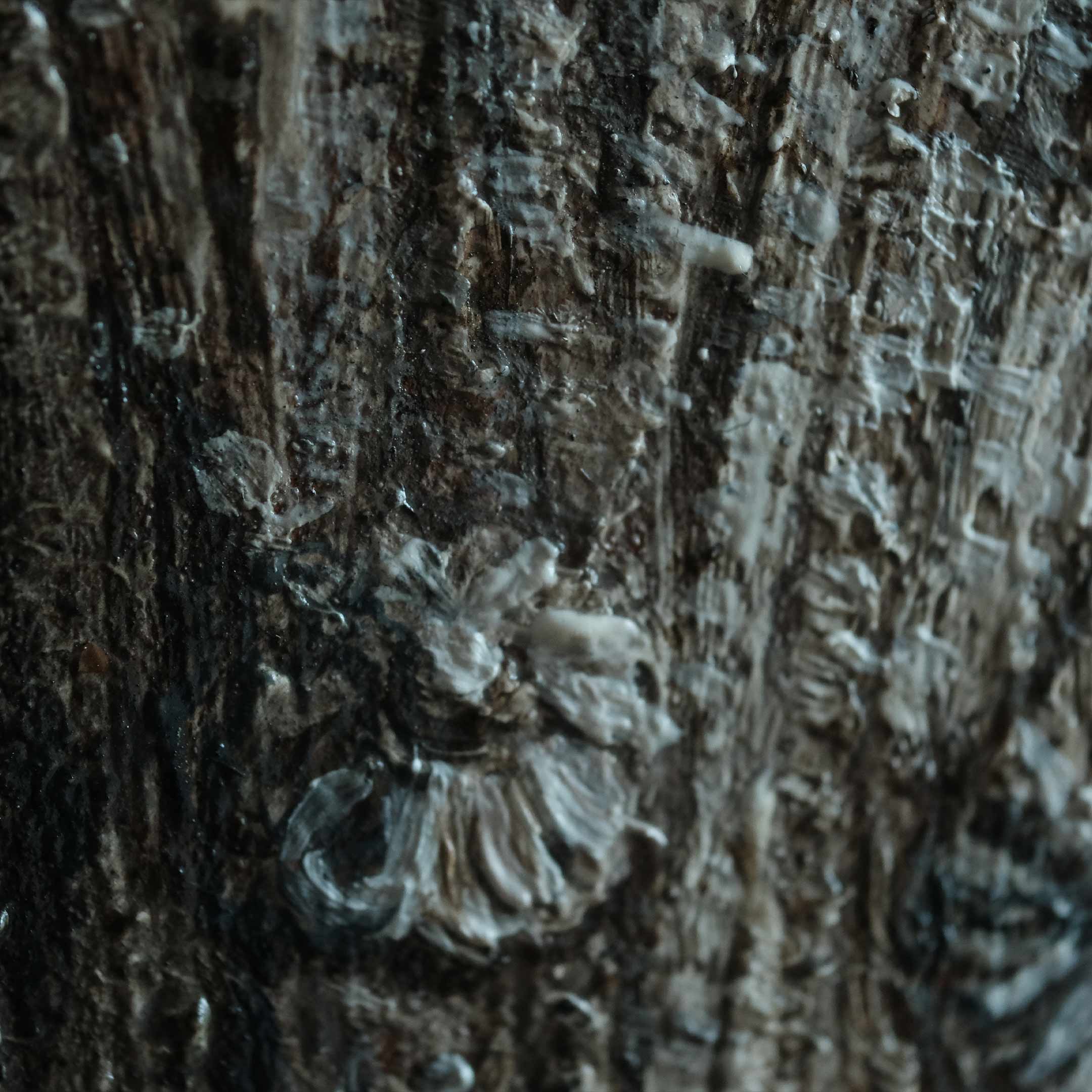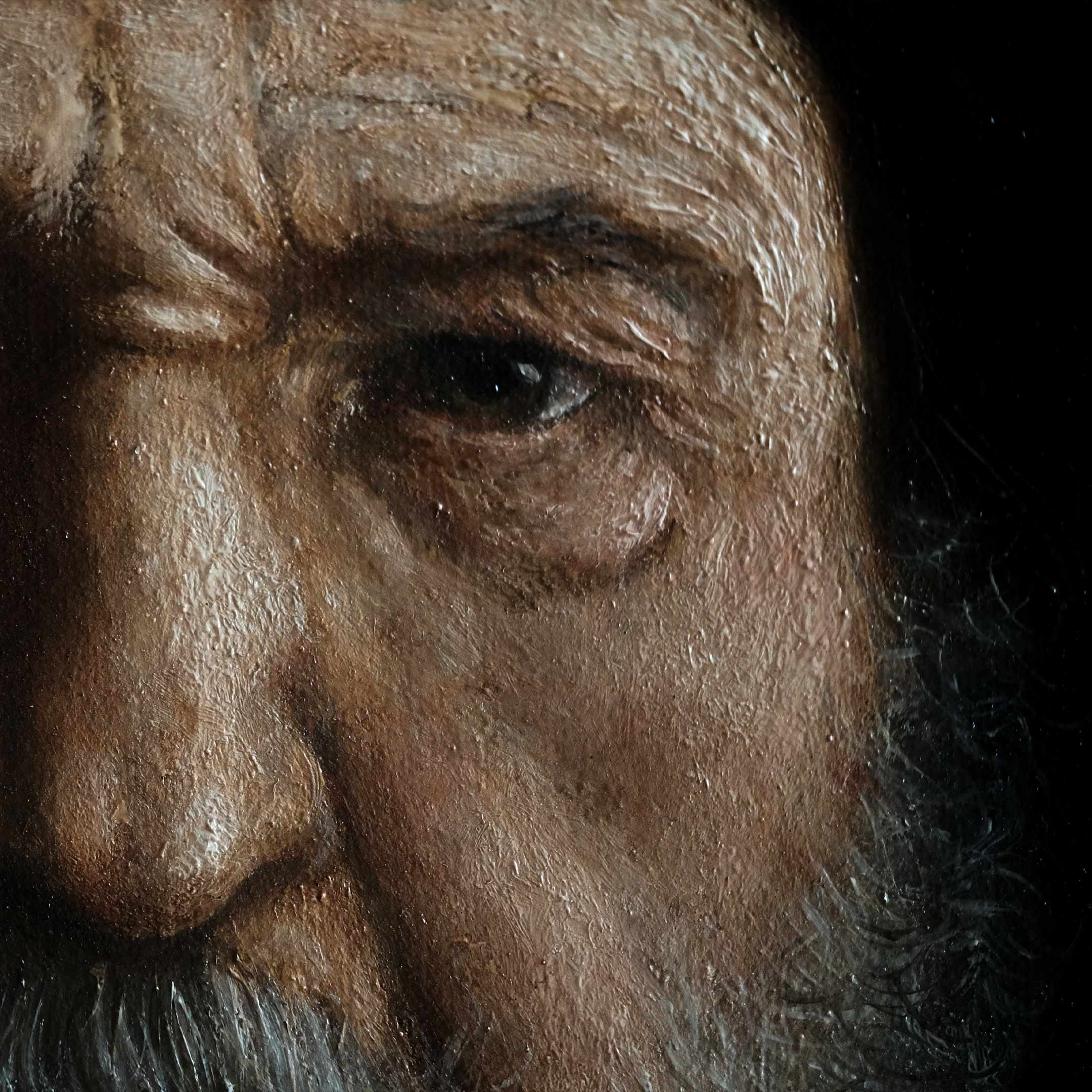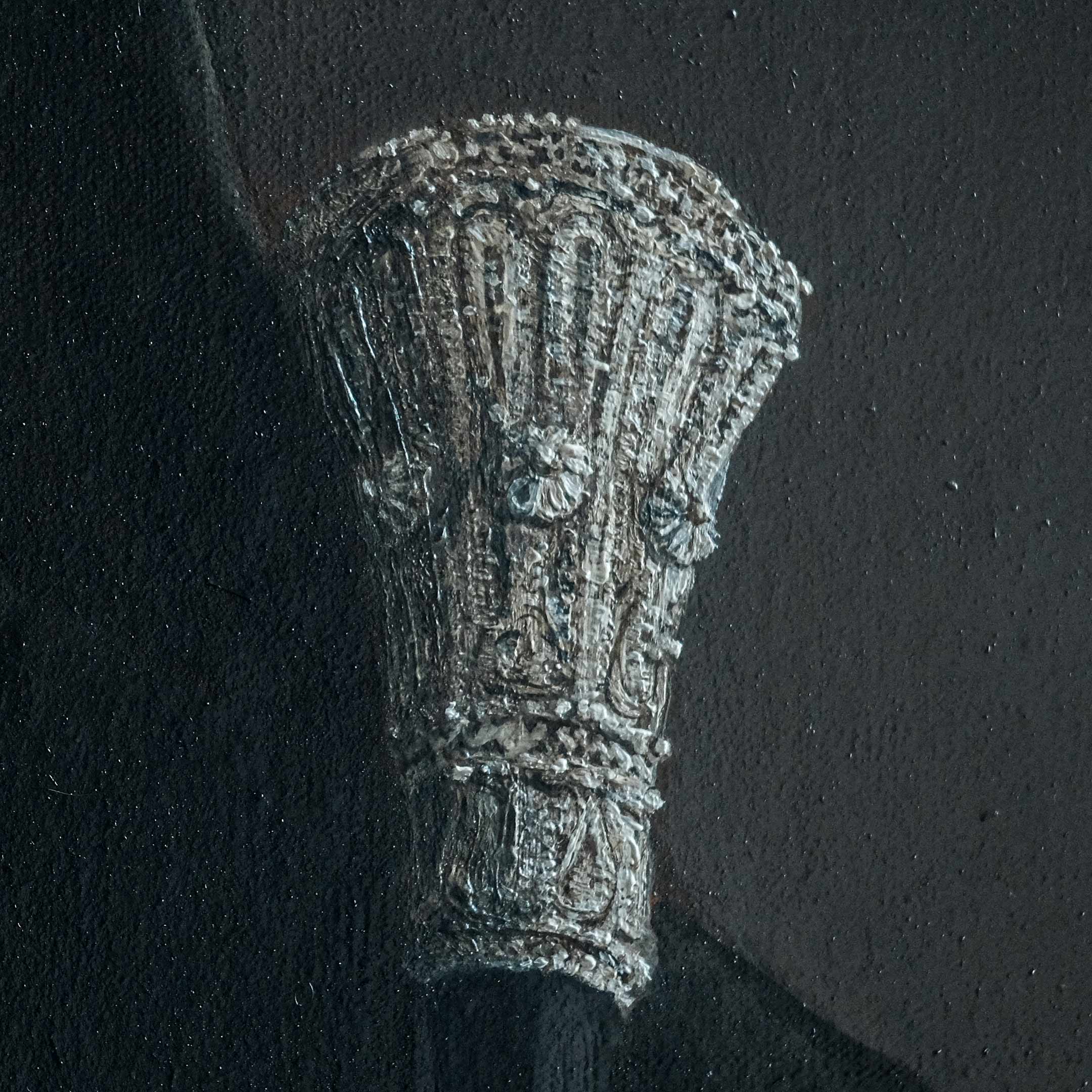Portrait of Bishop Artemije
Oil on canvas, 90 x 120 cm , memorial room commission museum Belgrade.
This painting is a portrait of the late Bishop Artemije (1935–2020), one of the most prominent and debated hierarchs of the Serbian Orthodox Church in recent history. Created using the traditional Old Masters' oil painting technique, the work reflects a deep reverence for sacred art, historical methods, and the spiritual gravity of the subject.

Portrait of Bishop Artemije
The composition is solemn and frontal, with a dark, restrained background that emphasizes the luminous presence of the bishop. Particular attention is given to the hand and episcopal staff, symbols of pastoral authority, as well as the richly ornamented pectoral cross and panagia, representing his episcopal dignity and spiritual mission. His face conveys a balance of gentleness and firmness — virtues that defined his decades-long monastic and episcopal life.
Bishop Artemije was known for his unwavering defense of traditional Orthodox values and his vocal stand in preserving the faith during the turbulent times in Kosovo and Metohija. A spiritual son of Elder Justin Popović, he remained committed to the legacy of the Serbian saints and ascetics. In this portrait, he is not merely represented in appearance but evoked in spirit — as a steadfast shepherd, a witness of Truth, and a man whose ascetic path left an enduring imprint on contemporary Serbian church life.

ON TECHNIQUE AND PIGMENTS
This portrait was executed in oil on canvas using the multi-layered technique of the Old Masters, especially characteristic of the Flemish and Italian schools from the Renaissance to the Baroque. The process involves building the image in transparent and semi-transparent layers, allowing light to reflect and refract through the surface, creating a sense of depth and inner glow that cannot be achieved with modern direct-painting methods.
A grisaille underpainting was used — a monochromatic first stage, typically in neutral grey or warm brown tones, allowing precise control of light and shadow before color is introduced. On top of this foundation, glazes were applied — transparent pigments suspended in natural oils, especially cold-pressed linseed oil, in successive layers.

The historical pigments used include:
-
Bone black – a carbon-based pigment derived from charred animal bones in an oxygen-reduced environment. It produces rich, deep blacks and was used here to articulate the folds of the robe, shadows, and areas requiring tonal neutrality.
-
Lead white – the most revered white pigment of classical oil painting. Unlike modern titanium white, lead white is subtly translucent and reactive to light, allowing the underpainting to “breathe” through upper layers. It was used to shape the highlights of the face, hands, and beard.
-
Lead-tin yellow – a warm, lustrous yellow pigment predating cadmium colors. It was employed in this painting to model the skin’s warmth and illuminate the highlights in the cross and panagia (episcopal medallion). Its durability makes it ideal for glazing and layering.
-
Smalt – a historical blue pigment made from ground cobalt-containing glass. Though less intense than ultramarine, smalt provides a gentle blue tone for cool shadows and was used here in the modulation of the beard and subtle reflections on the vestment.

Each layer of paint required extended drying periods, often several weeks, ensuring that the optical integrity of each layer remained uncompromised. The painting was completed with a series of glazes — mixtures of oil and minimal pigment — to create smooth tonal transitions and an almost ethereal surface quality.
The final surface is sealed with a natural damar or mastic varnish, enhancing contrast and depth while offering reversibility for future conservation.




